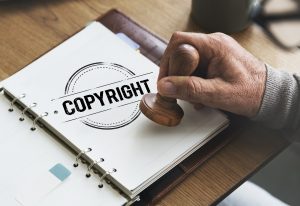Copyright protection is vital for creators, artists, writers, and businesses in Australia. It ensures that your intellectual property is safeguarded from unauthorised use, reproduction, or distribution. Understanding how to protect your copyright is crucial in today’s digital age, where content can be easily shared and exploited.
Understand Copyright
Copyright automatically protects original literary, artistic, musical, and dramatic works at the moment they are created and fixed in a tangible form, for example, drawing a sketch, painting a picture, writing a book, making a movie, producing software codes or record a song or a video. Nevertheless, words, slogans or ideas cannot be protected under copyright.
Copyright gives the owner exclusive right to reproduce, publish, communicate, display and adapt their original creation as well as to license, transfer, or sell it. These exclusive rights typically last for the life of the author plus 70 years.
In Australia, copyright protection is governed by the Copyright Act 1968 (Cth) (Copyright Act) and does not require registration. However, understanding the basics is essential to know what your rights are.
Clearly Identify Your Work
To strengthen your copyright protection, ensure your work is clearly identified as your own. Include a copyright notice, which should consist of the © symbol, your name, and the year of creation. For example, “© [Your Name] [Year].”
Keep Records for Your Work
Maintain detailed records of your work, including drafts, correspondence, and any other documents related to the creation and development of your intellectual property. These records can be invaluable in case of copyright disputes.
Licensing and Agreements
When sharing your work with others, consider using licensing agreements. These agreements specify the terms and conditions under which others can use your work, ensuring you maintain control and receive appropriate compensation.
When engaging contractors to produce design work for you, ensure that relevant clauses in the contractor agreement reflect the intended copyright ownership.
Online Protection
In the digital age, protecting your copyright online is of utmost importance.
Take steps to protect your copyright:
- Watermark your digital images and documents to discourage unauthorised use;
- Use Digital Rights Management (DRM) software to prevent unauthorised copying and distribution of digital content; and
- Monitor your online presence and use tools to search for unauthorised uses of your work.
Copyright Enforcement
The Copyright Act provides several enforcement mechanisms for copyright owners:
- Send a cease and desist letter to the infringing party, demanding it stop using your copyrighted material;
- If the cease and desist letter is ineffective, you may need to file a lawsuit in the Federal Court of Australia to protect your copyright; and
- In some cases, negotiations may lead to settlements without going to court.
International Copyright Protection
If your creation is shared internationally, consider registering your copyright with the World Intellectual Property Organization (WIPO) or understanding the copyright laws of the countries where your work is used.
Australia has international copyright treaties, which may assist in protecting and enforcing your copyright.
Seek Legal Advice
If you believe your copyright has been infringed, seek legal advice from The IP House Lawyers, as we have over 20 years’ experience in intellectual property law. We can help you understand your rights, pursue legal action, and negotiate settlements.
For any further information or queries on the above content, please contact us.
The Author
Jean Kallmyr | Lawyer, The IP House Lawyers | t: 0435 799 831 | e: admin@theiphouse.com.au
Key Contact
Claire Darby | Managing Director/Lawyer, The IP House Lawyers | t: 0412 998 951 | e: claire@theiphouse.com.au
Disclaimer
The information and contents of this publication do not constitute any legal or financial advice. This publication is intended only for reference purposes for The IP House Lawyers’ clients and prospective clients.
Image by rawpixel.com on Freepik

